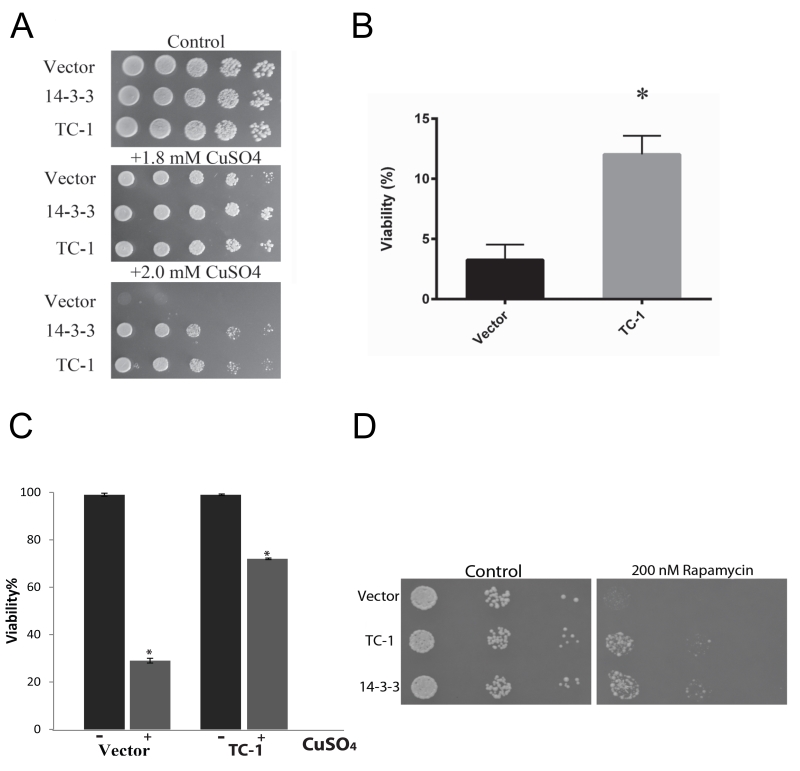FIGURE 2: TC-1 protects against copper.
(A) The growth of yeast cells transformed with empty plasmid (Vector), the TC-1 or h14-3-3 expressing plasmids was examined using a spot assay on YNB media with galactose alone or with the indicated concentrations of copper sulfate. The cells were allowed to grow at 30°C for 3 days and photographs of the plates are shown.
(B, C) Survival of yeast cells transformed with empty plasmid (Vector) or the TC-1 expressing plasmid was measured after treatment with copper sulfate using a (B) clonogenicity assay or (C) by microscopical examination of cells stained with the vital dye trypan blue. Cells were grown in galactose-inducing liquid media with 1.4 mM copper sulfate for 18-20 h. For the clonogenicity assay, aliquots of cells were plated onto nutrient agar and allowed to grow for 48 h at 30°C. The number of colonies formed were counted and compared to the corresponding control. Alternatively, aliquots of cells were treated with trypan blue and viability was determined by microscopical examination of at least 300 cells. Data represents median ± SEM of at least n = 3 independent experiments. * indicates that the viability of cells with the TC-1-expressing plasmids was significantly higher than the viability of control cells (Vector); a P-value of 0.0128.
(D) A spot assay was carried out using serially diluted cells obtained from freshly growing cells transformed with empty vector, hTC-1 or 14-3-3 expressing plasmids. Aliquots of the cells were plated onto nutrient agar media without (Control) or with 200 nM rapamycin.

